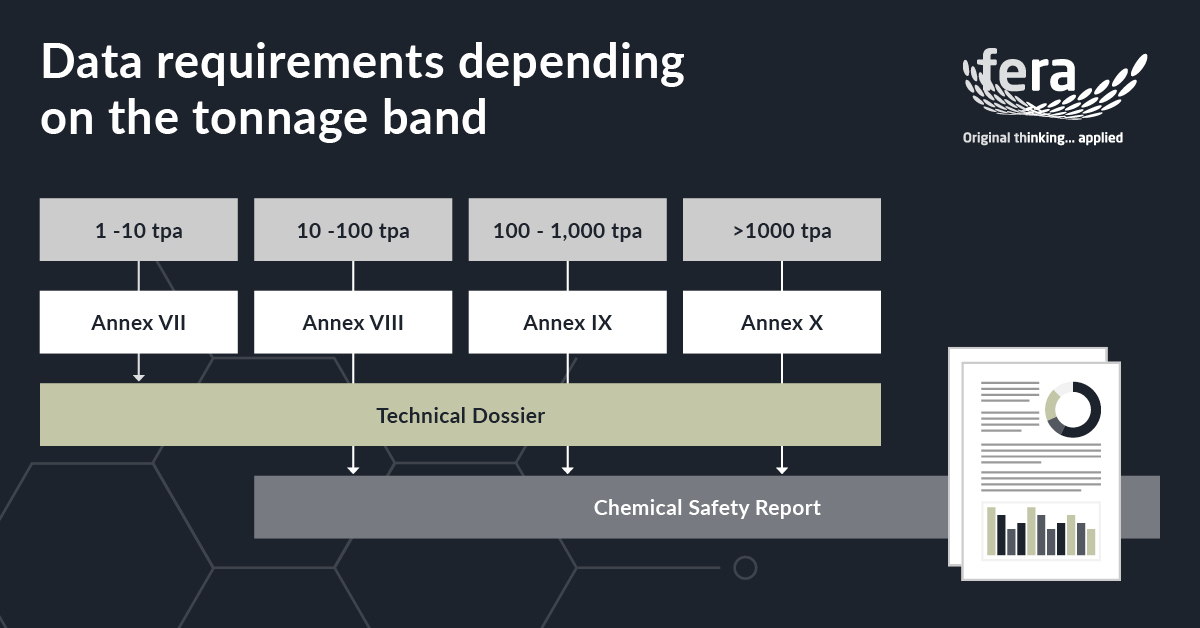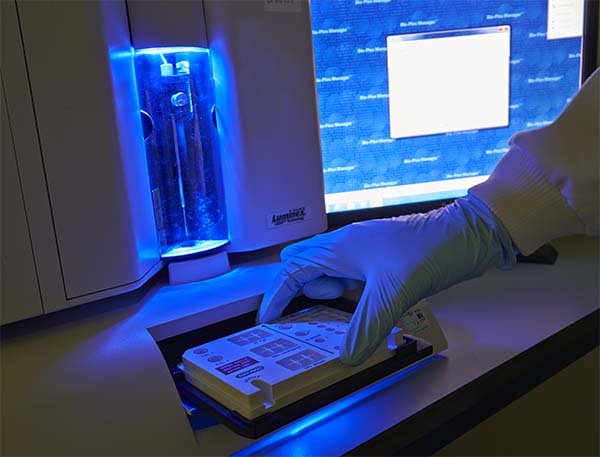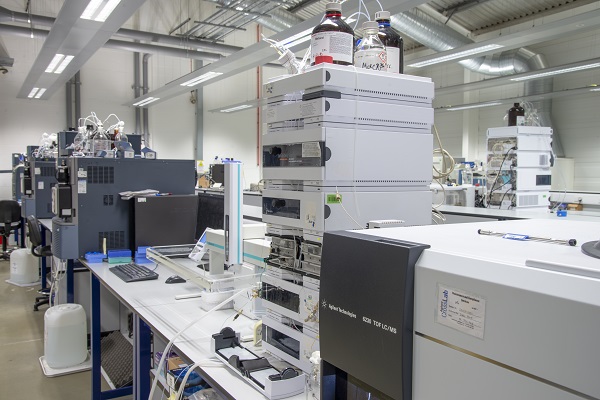
Visit our other sites
-
Fapas - Proficiency Testing
Globally recognised provider of proficiency tests, running over 400 tests annually across an extensive range of matrices and analytes
-
Great Crested Newts Testing
A single sample taken by an ecologist at any time during the newt breeding season can determine their presence or absence, saving you time and money
- Work with a partner who has extensive experience of undertaking laboratory studies to support the registration of chemicals under REACH. Our capabilities range from acute toxicity and biodegradation testing to performing complex higher tier studies.
- Contact Us Today

REACH
The REACH regulation was adopted by the EU (EC 1907/2006) to improve the protection of human health and the environment from the risks posed by chemicals. As such, the regulation covers the manufacture, import and use of chemicals. In principle, REACH applies to all chemical substances, and therefore not only covers industrial chemicals but also household chemicals, such as cleaning products, as well as substances used in clothes, furniture and electrical appliances. All chemicals manufactured or imported in quantities greater than 1 tonne per year must be registered.
In the EU, REACH is administered by ECHA (European Chemicals Agency), whilst in the UK, REACH submissions under the UK REACH regulation are regulated by CRD (Chemicals Regulation Division) within the Health and Safety Executive.
REACH places the responsibility for managing chemical safety on industry and companies must therefore identify and manage the risks of substances they manufacture and market in the EU and UK. As part of the REACH process, registrants must demonstrate how their substances can be used safely and if the risks cannot be managed, then the use of the substance can be restricted. REACH targets the progressive substitution of the most dangerous chemicals ("substances of very high concern") with suitable, less hazardous, alternatives. Additionally, REACH aims to minimise testing on animals by requiring companies to share data and promoting alternative, in-vitro (non-animal) methods for exploring chemical properties.
How can we help?
Under REACH, chemical manufacturers and importers are required to gather information on the properties and hazards of their chemical substances. If the substance is imported or manufactured in quantities greater than 10 tonnes, then a chemical safety report is also required as part of the registration. A key aspect of this assessment is understanding the potential effects of the chemical substance on the environment.
Fera is vastly experienced at assessing the impact of chemicals on the environment. Our expertise can therefore support REACH compliance by undertaking studies that explore the following properties of chemical substances:
Environmental Fate and Behaviour in the Environment
- Degradation & Persistence
- Adsorption & Mobility
- Bioaccumulation
Ecotoxicology
- Toxic effects on Aquatic Organisms (including sediment)
- Toxic effects on Terrestrial Organisms
- Toxic effects on Activated Sludge
Physical and Chemical Properties
Filling Your REACH Data Gaps
The use of in silico models as an alternative to animal testing is now well established in regulation, providing reliable results whilst reducing the time and costs inherent with laboratory testing. Download the PDF to read more about how we can use (Quantitative) Structure-activity relationships (Q)SARs to fill your REACH data gaps.


Ecotoxicology Studies
OECD 202 - Daphnia sp. acute immobilisation
OECD 201 - Freshwater algae and cyanobacteria, growth inhibition
OECD 203 - Fish, acute toxicity
OECD 236 - Fish Embryo Acute Toxicity (FET)
OECD 209 - Activated Sludge, Respiration Inhibition
OECD 211 - Daphnia magna Reproduction
OECD 210 - Fish, Early-life Stage Toxicity
OECD 207 - Earthworm, Acute Toxicity
OECD 216 - Soil Microorganisms: Nitrogen Transformation
OECD 208 - Terrestrial Plant Test: Seedling Emergence and Seedling Growth
OECD 227 - Terrestrial Plant Test: Vegetative Vigour
OECD 222 - Earthworm Reproduction
OECD 218 - Chironomid Toxicity Test Using Spiked Sediment
OECD 219 - Chironomid Toxicity Test Using Spiked Water
Degradation, E-fate and behaviour
Studies
OECD 301 Ready Biodegradability
OECD 111 Hydrolysis as a Function of pH
OECD 309 Aerobic Mineralisation in Surface Water
OECD 307 Aerobic and Anaerobic Transformation in Soil
OECD 308 Aerobic and Anaerobic Transformation in Aquatic Sediment Systems
OECD 121 Estimation of the Adsorption Coefficient (Koc) on Soil and on Sewage Sludge using High Performance Liquid Chromatography (HPLC)
OECD 305 Bioaccumulation in Fish: Aqueous and Dietary Exposure
OECD 106 Adsorption – Desorption using a Batch Equilibrium Method
Physchem Studies
OECD 105 Water Solubility
OECD 107 Partition Coefficient (n-octanol/water): Shake Flask Method
OECD 117 Partition Coefficient (n-octanol/water), HPLC Method

Lorem Ipsum is simply dummy text of the printing and typesetting industry. Lorem Ipsum has been the industry's standard dummy text ever since the 1500s.
We excel at delivering higher tier REACH studies to support your data needs
Download our comprehensive list of REACH studies
Endocrine Disruptors (EDs)
Endocrine disruptors (EDs) are chemical compounds which can alter the normal functioning of the endocrine system and cause developmental and reproductive effects in humans and animals. As both the exposed individual and its offspring can be affected by endocrine disruption there are concerns about the longer-term impacts of endocrine disrupting chemicals for populations and ecosystems.
A diverse array of organic chemicals have been shown to exhibit endocrine disrupting effects, including polychlorinated biphenyls (PCBs), organochlorine pesticides, plasticizers, surfactants, pharmaceuticals, natural and synthetic estrogens as well as phyto- and mycoestrogens. Many of these compounds can alter activity of the endocrine system at orders of magnitude below concentrations previously thought to be harmful to humans and animals, therefore posing a major challenge to the regulation and use of many classes of chemical.
Our Study Director and Aquatic Ecotoxicologist, Karen Thorpe, is an applied biologist who has worked in the field of endocrine disruption for over 20 years. Karen understands the impacts of endocrine disrupting chemicals on stress physiology and the reproductive success of invertebrates and vertebrates, particularly fish, and has extensive experience of performing laboratory studies to explore the effects of chemicals on the endocrine system.
We have over 20 study directors in our product safety labs with over 250 years of combined experience focussed on delivering the right solution. We continuously invest in our people and support them in delivering the best science to our partners.

Victoria Pratt
Victoria is a Senior Environmental Fate Scientist for chemical safety at Fera. With a background in chemistry, Victoria performs the role of GLP study director for commercial and research projects within the environmental fate and behaviour sector.

Phil Rooney
Phil performs the role of study director for highly technical studies as well as managing a large team of GLP study director’s working on a variety of chemical classes and regulations. As the Senior Chemical Fate scientist at Fera, Phil’s duties include the line management of technical staff and being the technical liaison for customers.

Karen Thorpe
Karen is an aquatic biologist based in the Ecotoxicology group at Fera. Karen has been involved in the development of methodologies for assessing the effects of chemicals on reproductive physiology and will be responsible for expansion of the science capabilities within the group to evaluate chemicals for endocrine disruption.

Copyright © 2025 Fera Science Limited (“Fera”). All rights reserved.
For further information about how Fera uses any personal data collected from you, please see our Privacy Notice at www.fera.co.uk/privacy-policy.








